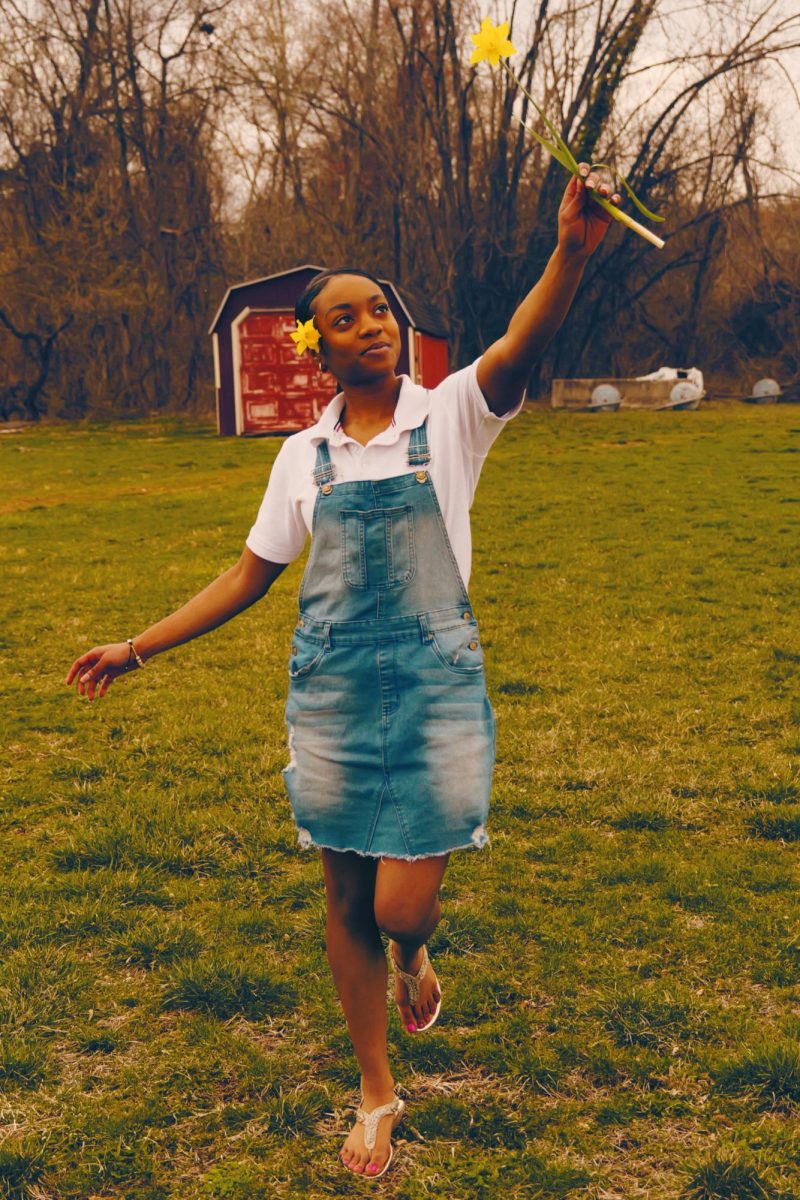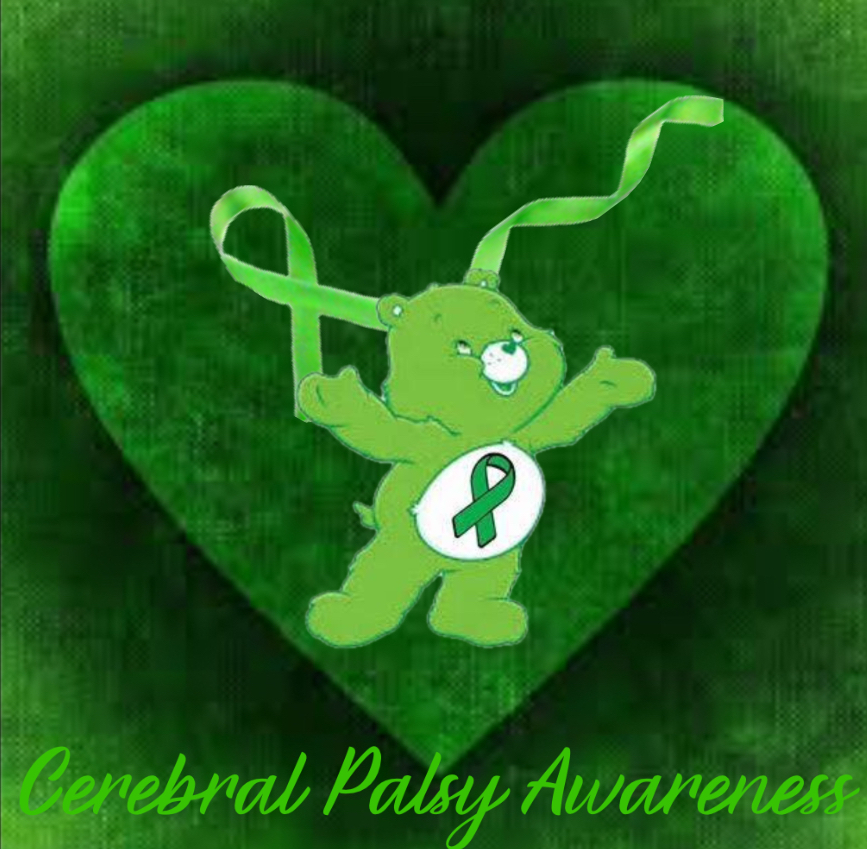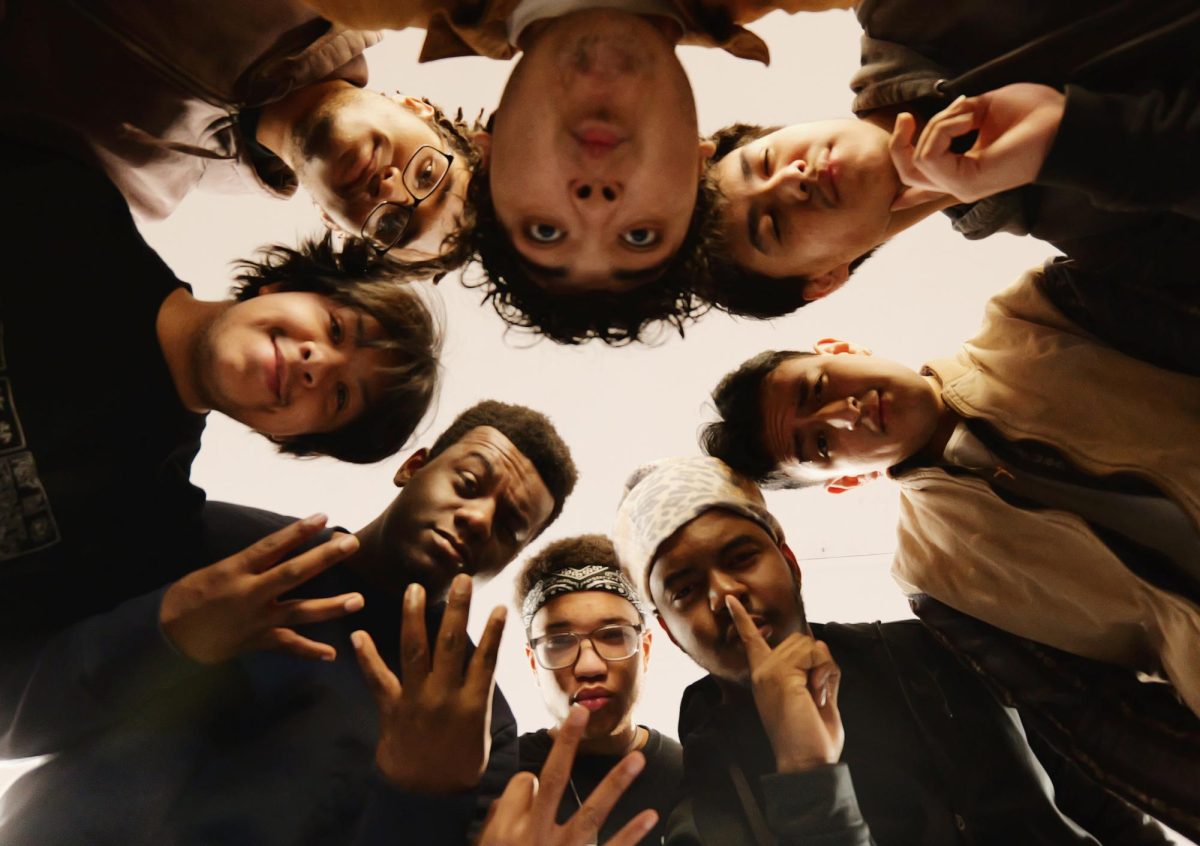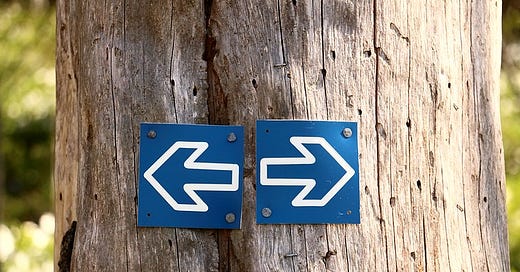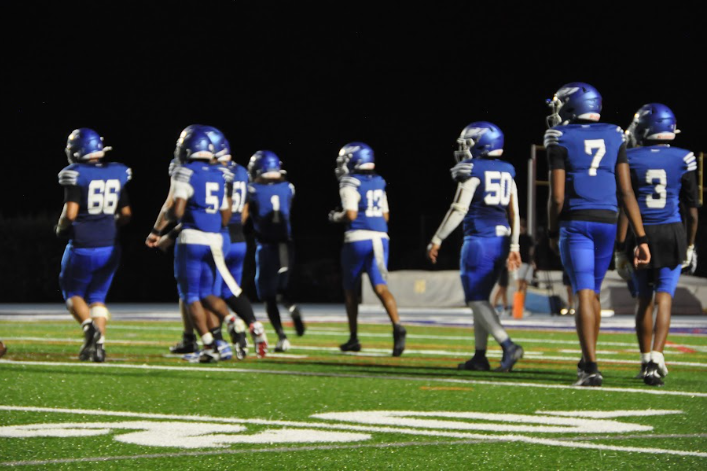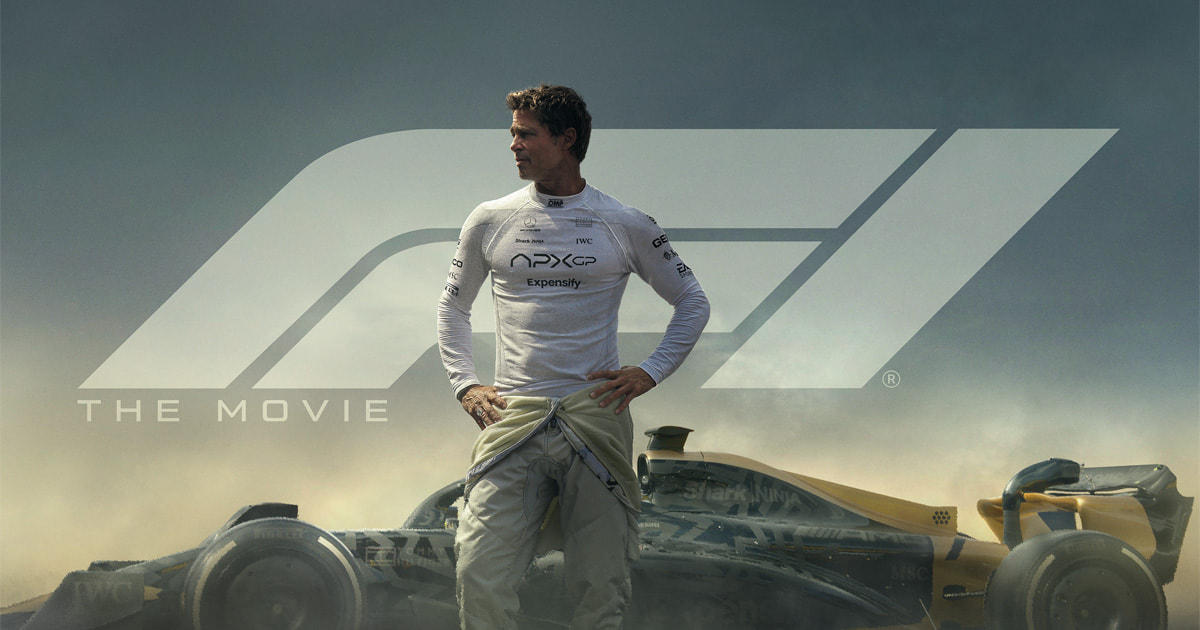I am of the firm belief that the world would be better off without AI. As a 6-year-old boy who watched “Wall-E” almost religiously, I saw its main antagonist, AUTO, as a mean and nasty robot who held the heroes back, and I was too scared to watch “The Terminator” because an evil killing robot was too much for me. With the constant films and stories of AI going rogue and wiping humanity out, I was always under the impression that robots, and AI as a whole, were evil. Even as I grew up, I always felt the need to do everything myself before I rely on AI.
Unfortunately, there’s been a sudden spike in the use of generative AI in recent years, notably in creative spaces. Programs that generated photos, artwork, videos, scripts, and even voices began as obviously fake, but over time, rapid advancements occurred within these programs, making them look and sound more realistic. With such improvements, there has been an increase in people using AI to put less time and effort into their work. As a result, my disdain for AI only grew.
However, as my distaste for AI grew, so did my curiosity on the subject, and I began wondering just how harmful AI really is. There’ve been plenty of studies on the detrimental effects AI has had on the environment, but my main concern centered on the influence AI could have on human behavior.
The scope started small, as I spoke with teachers here at NAHS as to how AI has affected ours and others schools. ChatGPT is by far one of the most well-known AI programs, and it became a household name within many schools, NAHS included. Students find themselves drawn to the easy-to-use program, and many teachers and students within our school have come forward to share their thoughts on its use for assignments, essays, and inspiration.
Bartlett and Knopf See Generative AI as a Valuable but Limited Tool
Ms. Kate Bartlett, an English teacher here at NAHS, finds herself always on the lookout for AI amidst her students’ writing assignments. What first started out as a simple task, differentiating what’s real and what’s AI became a guessing game, as students have learned to put their essays through humanizers (AI that focuses on making the writing sound human). On average, Bartlett catches 5-6 students using AI each semester, but she believes that there may be many more students whose AI usage slipped through the cracks.
“I think it is a big problem in our school, in all schools, and everywhere, because people are not thinking for themselves anymore,” Bartlett said. “They’re afraid to make mistakes, so they immediately go to AI, and they’re getting these flawlessly, in their mind, written essays and short answers. We are lacking thought.”
Nevertheless, Bartlett doesn’t find herself against the idea of AI as a whole, even with the struggle it brings to her class. Bartlett speaks of the difficulty that comes with organizing one’s writing, and finds that a good utilization of AI could come with building outlines that can then be used as a scaffold, like the skeleton of a body.
“They know what they want to say, they know what their thesis statement is, but they can’t get themselves to organize it correctly,” Bartlett said. “I’m not against it. I just think we’re misusing it.” Though she stressed that she’s not in any way an AI fanatic.
Under a broader lens, programs similar to ChatGPT have extended their reach on not just schools, but to other major industries as well, most notably the film industry. Script writers have found themselves on edge as concerns rise due to the potential of studios adopting generative AI into their projects to save time and money. Though the writers’ strike of 2023, which the concerns of AI replacing writers in the industry had a part to play in, has eased most of these worries, there’s still a lingering threat of AI becoming more advanced and writers less sought out for.
Ms. Bartlett shares my concerns about AI becoming a tool that can be abused in creative spaces, ultimately stifling creativity. Just 3 years ago, AI could only generate gibberish with barely a semblance of a plot. Now, it can rival the minds of mediocre writers and directors. In a few years, I’m sure that it’ll evolve to contend with our most renowned visionaries, erasing the need for creative thinking. It is this future that worries Bartlett about the possibility that we humans will no longer be able to think for ourselves. In a future where AI could grow to rival the creative minds of many skilled directors and writers, Bartlett is worried about the possibility that we humans will no longer be able to think for ourselves.
“We’re not used to sitting with the discomfort of not having a correct answer right away,” Bartlett said. “If we have something to solve [writing] so quickly, what’s the point? People won’t want to struggle anymore. You don’t like to be uncomfortable too often.”
NAHS’s photography teacher, Ms. Rachel Knopf, shares a mindset similar to Bartlett’s.
“I think using it as a tool, not as an end product, is the best way to use AI at the moment,” said Knopf. “I use it as a tool during the process of art making, not an end result.” Knopf believes that the use of AI is best utilized as a tool for inspiration, and in the case of photography, generative AI programs could come up with interesting compositional choices that photographers can then take as reference for their own work.
Common photography apps like Adobe Photoshop have also introduced generative fill, a feature that can add to or change a photo. Knopf finds that, although the feature is not representative of photography, it is still a form of art that meshes and blends different products to create a new kind of imagery, similar to graphic design. However, Knopf stresses that such a feature “doesn’t look good” to her. However, in the case of graphic design, Knopf believes AI is a far more beneficial tool, as it can better assess color palettes and how those palettes unite the image.
As for AI’s wider use amidst other fields such as music and film, Knopf finds herself not worried about AI at the moment, understanding that, as it stands right now, it’s simply not advanced enough to warrant large-scale panic. And as AI introduces itself to other mediums, Knopf is more interested in how AI engages with different art forms, trying to best understand the prospects that come with it.
“There’s always going to be new things coming out. I think it’s important to understand what’s out there,” Knopf said. “You can kind of tell when AI makes something versus a human. It’s just different. It’s almost like it’s its own person, so I think it’s okay for now to try to push the limits to see what kind of person AI is, but don’t give human credit to AI.”
Knopf can’t help but feel excited about how AI will influence the future, although she does carefully consider the potential danger it can pose with its use for misinformation and overuse.
“It’s an excited nervousness because, you know, we all see “Terminator,” we all see those movies where AI takes over,” Knopf said. “I don’t think we’re at that point yet. It’s not scary yet, but I think the future could be scary.”
With the many suggestions made by both teachers, my thoughts surrounding AI grew more nuanced. I understood why people may find themselves drawn to AI. No one wants to waste time doing chores and menial tasks, and admittedly, the products that come from AI are interesting to observe and analyze (although I poke fun at it rather than analyze it).
But in a creative space where your own thoughts, emotions, and passion are what give the piece life, I still find any use of AI to pose a threat to the creative process. Struggling to find and give form to those emotions is what makes it art, not the 1s and 0s of a collective database that absorbs everyone else’s art.
Noce Feels Generative AI Hurts the Creative Process
Ms. Lisa Noce, an art teacher for NAHS, is a strong detractor against the use of AI in any creative space, feeling that it can take away from those thoughts, emotions, and passion that go into the creative process. Like Bartlett, Noce worries that AI is getting us too used to the comfort it can bring with its automation of creative works. Though she can see why people use AI for reference images in their artwork, Noce finds that the process robs people of creativity, both from those who create art and those who consume art. Artists will find AI to be unfair to their years of hard work, while the consumer will be exposed to unoriginal pieces that say or do the bare minimum.
“We shouldn’t be embracing it at all. I think it’s going to take away from human beings’ ability to think and want to think,” Noce said. “If people aren’t going to want to think anymore, they’ll just want to take the easy way out.”
The use of AI to save money from hiring artists is not a foreign concept anymore, and companies such as Coca-Cola and Disney are beginning to utilize these programs to advance their promotional material. With the growth of AI’s use for monetary purposes, Noce is worried that artists’ jobs will be lost as a result.
She is not, though, under the assumption that AI will replace artists as a whole. In the future Noce describes, there will still be people who view human-made Art as a status symbol, a commodity that has something that AI Art can try replicating but can never quite copy: “Soul.”
“You can’t rely completely on AI. You still need human thought and emotion involved,” Noce says, referencing movies such as the “Upside” and, coincidentally, my favorite childhood movie, “Wall-E.” “I don’t think it truly has that true creativity that some people can come up with.” She brings up my own artwork that I have done in her class, which, although a bit rough around the edges, is still, at heart, human.
In both art and education, Noce questions the integrity of AI. There is real damage done to the creative minds of students, artists, and everyday people alike. We’ll consume AI without knowing that it’s consuming our own minds. Noce comes to the conclusion that AI will stifle not just creativity, but our emotions and ability to think as individuals. It’s a dire conclusion that sees AI at its worst possible outcome. Yet, I can’t help but agree in some sense that it is a future already within our reach.
Noce references a tweet she viewed, which summarizes her hopes for AI. “You know what the biggest problem with pushing all-things-AI is? Wrong direction” it starts. “I want AI to do my laundry and dishes so that I can do art and writing, not for AI to do my art and writing so that I can do my laundry and dishes.”
Stanchock Believes Students Should Be Educated About Generative AI
In complete contrast to Noce’s heavy disdain for all things AI, art teacher Ms. Brynn Stanchock finds herself supportive of the idea of AI. Stanchock is open about her use of AI in her Art Major 1 class. By letting her students pick things that’ll go in the image, Stanchock uses AI to generate a picture using their suggestions. From there, the class will come together to discuss the elements of the image, deciding what the AI does well and how it can be improved using their collective knowledge. In this way, Stanchock educates her students on AI in an interesting, engaging, and most importantly, creative way. Relating back to ChatGPT, Stanchock agrees that even that program can be used to make a format that you can then reference and incorporate your own artistic voice into.
“I think it’s a good way to get over that roadblock and just get creating and putting your own voice into something,” Stanchock said. Although she’s supportive of using it in an educational format, Stanchock won’t accept students using AI as an end-all be-all. “I actually don’t mind [AI] helping you, I just don’t like when you rely on it to give you the final product and you don’t put your own voice into it.”
As described by her, Stanchock finds AI to be abundant in many businesses, even playing a role in her side job working as a travel agent. She believes that teaching students how to effectively use AI, to hone its potential and know when it should and shouldn’t be used, would work best for the futures of people who enter these jobs that already use some form of AI.
As computers and the internet took over everyday life during the early 2000s, Stanchock believes that people became too reliant on this technology, letting the computer do the heavy work while they sat back and didn’t bother to learn any general skills. AI feels much the same as that initial introduction to a new and profound technology, with Stanchock imagining that people could once again become over reliant on this new tool. Stanchock believes that in order to prevent ourselves from repeating the past, we must understand what went wrong and adapt to similar situations. In this case, AI should be understood, not neglected and left to its own devices by people who abuse it.
“I think it does have to be limited a little bit. But I think it has the potential to really change the world and how we use our energy,” Stanchock said. “If we’re not using all of our energy to create ideas, then we’re using our energy to better them.”
When recounting AI’s use to spread misinformation, Stanchock compares it to the propaganda of the past. “I think it’s dangerous because it can make people think things are true that aren’t. But we’ve always had that in writing. We’ve always had that in other forms of communication,” Stanchock said. “It’s just a new form of communication that we have to figure out how to teach people to consume in an educated way.”
Understandably, people fear AI taking their jobs and creating, in blunt terms, a “dumber society,” as Ms. Bartlett would put it. But with proper education and usage, Stanchock trusts that people will utilize it for menial tasks and as an aid for their larger works. In the world of art, AI could be seen as a guide or a teacher, not a replacement, for art.
“I have this dream that eventually, when my child is an adult, he won’t have to work a 40/50 hour work week because we’ll be able to get tasks done so much easier that people will be able to work less and still make the same amount of money and still survive, and be able to enjoy life a little more,” Stanchock said, keeping an optimistic outlook on the future of AI.
And it’s not just art that AI impacts. Stanchock recounts some of her doctors using AI to make sense of symptoms and illnesses that they can’t make sense of. As Stanchock describes, AI acts as a vast collection of medical knowledge that doctors could then go to when they’re unsure of illnesses they were not taught about in school. And it’s not just knowledge of professions and arts that AI stores. By observing and taking in the emotions that humans display in their interactions, Stanchock believes that AI has a good database of how humans operate and think, leading to a potential use as a therapist. Bartlett has also brought up a similar statement of having AI be seen as someone who is there for you, though she warns that one must still interact with real humans to avoid an over-reliance on AI. Understanding this, Stanchock still makes the argument that AI as a therapist could help and has helped others, with her referencing her own son as an example, someone who has gone to AI when his therapist wasn’t available.
When speaking of its health uses, Stanchock finds potential in AI as it grows and improves. “That opens up free health care to people who might not have had access to it or might not be willing to come forward and say that they need it,” Stanchock said. “So I feel like it could be really life-saving for some people.”
Years from now, Stanchock says that AI will incorporate into society just as naturally as other new inventions that sparked concern about certain art forms. She references the invention of the sewing machine and how, over the years, it slowly integrated itself into daily life as a useful tool meant to make those long hours shorter. Sewing by hand still exists. It’s an art that, although made easier with sewing machines, is still a wonderful hobby enjoyed by many. Back when painters were obsessed with making their work as realistic as possible, photography posed a threat to painters as they feared they would be replaced. But painting is versatile, being more than just the real world, and photography soon became its own form of art, not replacing painting but rather adding to its value. As mentioned by Stanchock, the internet did not replace the minds of geniuses, but acted as a vast library for others to access their knowledge. Maybe AI will end up being the same.
I am of the firm belief that the world would be better off without AI, or at least that was my initial assumption when writing this article. I despised AI because I thought of it as a threat to the creative minds of others. But having gained a new perspective on AI, I feel it can accomplish far more by acting separately from our creative thinking.
The way that AI is being used as of now in the creative industry is with the intention of replacing art with brutal efficiency. People see it as the next step in artistry, but AI is not inherently creative. No matter how hard it tries, it can never be human, and to be human is to have a soul.
Instead, we should educate ourselves on AI and be open to the idea of its integration in our daily lives. Instead of making our art, it should grant us leeway from the chores of life so we can dedicate ourselves to ourselves. It’s a tool that can and should be used as just that, a tool that plays its own part in the larger machine it’s piecing together, not the jack-of-all-trades that it’s criticized for. Thankfully, there are already regulations being placed on AI in creative fields, and the environmental effects AI has are being worked on to be easier on the environment.
In my favorite childhood film, “Wall-E”, the main antagonist, AUTO, is an overseer of all the humans aboard the ship, who’ve become too absorbed in the comfort that the robot assistants bring, being unable to even perform any sort of stimulating activities that inspire creativity. However, it was not malice that brought AUTO to stop Wall-E and EVE from freeing the humans. It was a protocol built into its very wires to protect the humans from all harm. That protocol was established by corporations that profited from the ship, seeing Earth’s condition as an opportunity for intergalactic capital.
The same logic should be applied in real life. It is not AI’s fault for the behavior humans are displaying, but the greed of man who program and use this revolutionary tool as a way to profit. We must learn to collaborate with AI to fix its flaws and adapt to this new tool. If used correctly, without the need to stifle our creativity or become too absorbed within it, I’m certain that AI will serve as a huge advancement for humanity (though I must stress that I am NOT one of those AI fanatics even after this grand speech).
It is no coincidence that, at the end of the movie, it is Wall-E and its gang of miscellaneous robots who unite with the humans to rebuild Earth, hand-in-hand and hopeful for a new age of prosperity.




